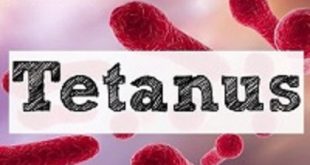Definition Nephrotic syndrome is the state that the kidney excretes large amounts of protein in the urine. It is usually caused due to the damage in the cluster of blood vessels in the kidney that filters waste materials from the blood. It causes swelling (edema) in ankles, legs and feet. …
Read More »Dengue – Complications, Risk Factors, and Diagnosis.
Introduction Dengue is a self-limiting acute mosquito-transmitted disease characterized by fever, headache, muscle, joint pains, rash, nausea, and vomiting. Dengue Fever (DF) is caused by an arbovirus and spread by Aedes mosquitoes. Some infections result in Dengue Haemorrhagic Fever (DHF) and in its severe form, Dengue Shock Syndrome (DSS) can …
Read More »Ringworm or Dermatophytosis – Description, Symptoms, and Treatment.
Description Ringworm is also called as dermatophytosis, which is a fungal infection that affect that affects skin on the body (Tinea corporis), scalp (Tinea capitis), groin area (Tinea cruris, also called jock itch), or feet (Tinea pedis). This disease is named after the ring type of rash that developed on …
Read More »Tuberculosis – Causes, Symptoms, Treatment, and Prevention.
Definition Tuberculosis (TB) is a disease which in humans is usually caused by bacteria called Mycobacterium tuberculosis (M. tuberculosis). TB is an abbreviation of the word Tuberculosis and is how people often refer to the disease. Bovine TB is a disease caused by similar bacteria called Mycobacterium bovis (M. bovis). …
Read More »Spina Bifida – Description, Risk Factors, and Symptoms.
Description Spina bifida is a term which comes from Latin and literally means ‘open’ or ‘split’. It is a birth defect occurs when there is a malformation of bones of the spinal cord during the 1st month of pregnancy. This defect might cause an opening at the back, which is …
Read More »Rabies in Human – Causes, Risk Factors, Diagnosis and Management.
Definition Rabies in Human – Rabies is an acute viral illness affects all the warm blooded animals including man. It spreads via rabid animal bites to other animals and humans too. It is a zoonotic disease caused by a rabies virus of the Lyssavirus genus, belongs to the family Rhabdoviridae. …
Read More »Tetanus – Symptoms, Causes, Treatment, and Prevention.
Definition Tetanus is an acute, often-fatal disease of the nervous system that is caused by nerve toxins produced by the bacterium Clostridium tetani. This bacterium is found throughout the world in the soil and in animal and human intestines. The bacterium can also lay dormant in its spore form for …
Read More »Poliomyelitis – Description, Causes, and Treatment.
Introduction Poliomyelitis, commonly known as polio, is an infectious viral disease caused by the genus Enterovirus from the Picornaviridae family. Poliomyelitis is a paralytic disease resulting from the destruction of motor neurons in the central nervous system and can lead to partial or full paralysis. Structure of polio virus …
Read More » Diseases Treatments Dictionary This is complete solution to read all diseases treatments Which covers Prevention, Causes, Symptoms, Medical Terms, Drugs, Prescription, Natural Remedies with cures and Treatments. Most of the common diseases were listed in names, split with categories.
Diseases Treatments Dictionary This is complete solution to read all diseases treatments Which covers Prevention, Causes, Symptoms, Medical Terms, Drugs, Prescription, Natural Remedies with cures and Treatments. Most of the common diseases were listed in names, split with categories.








